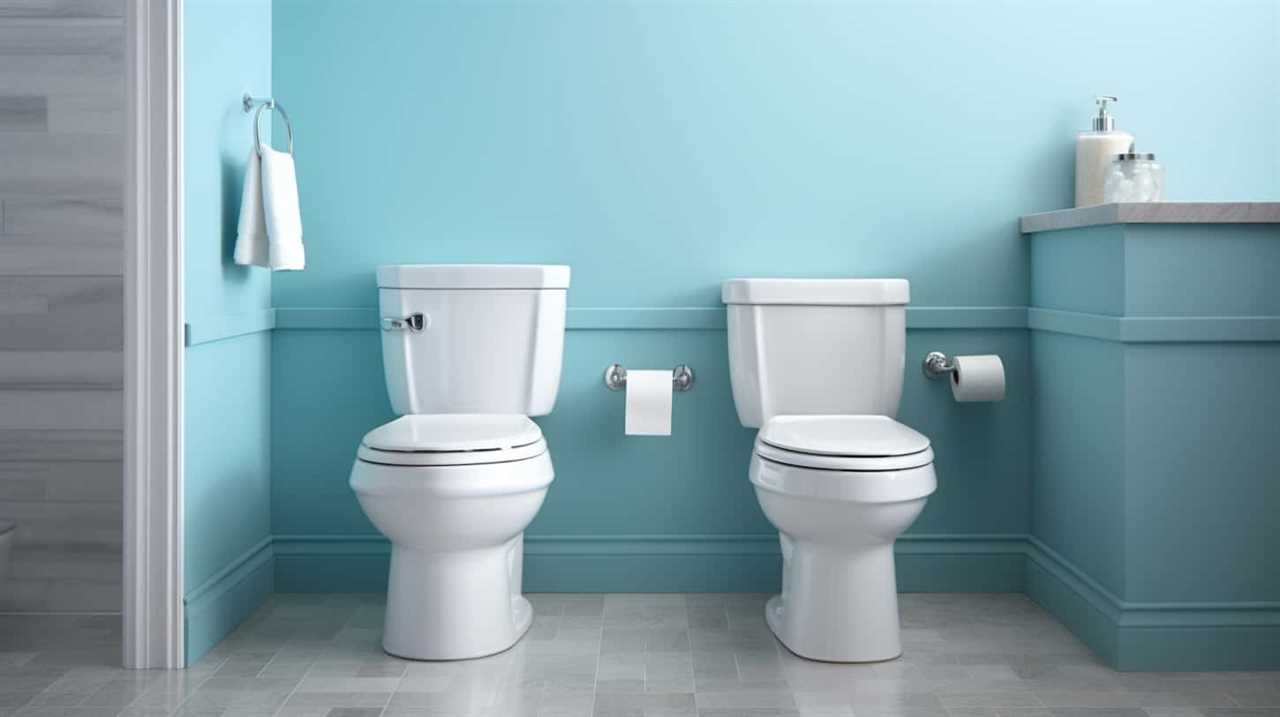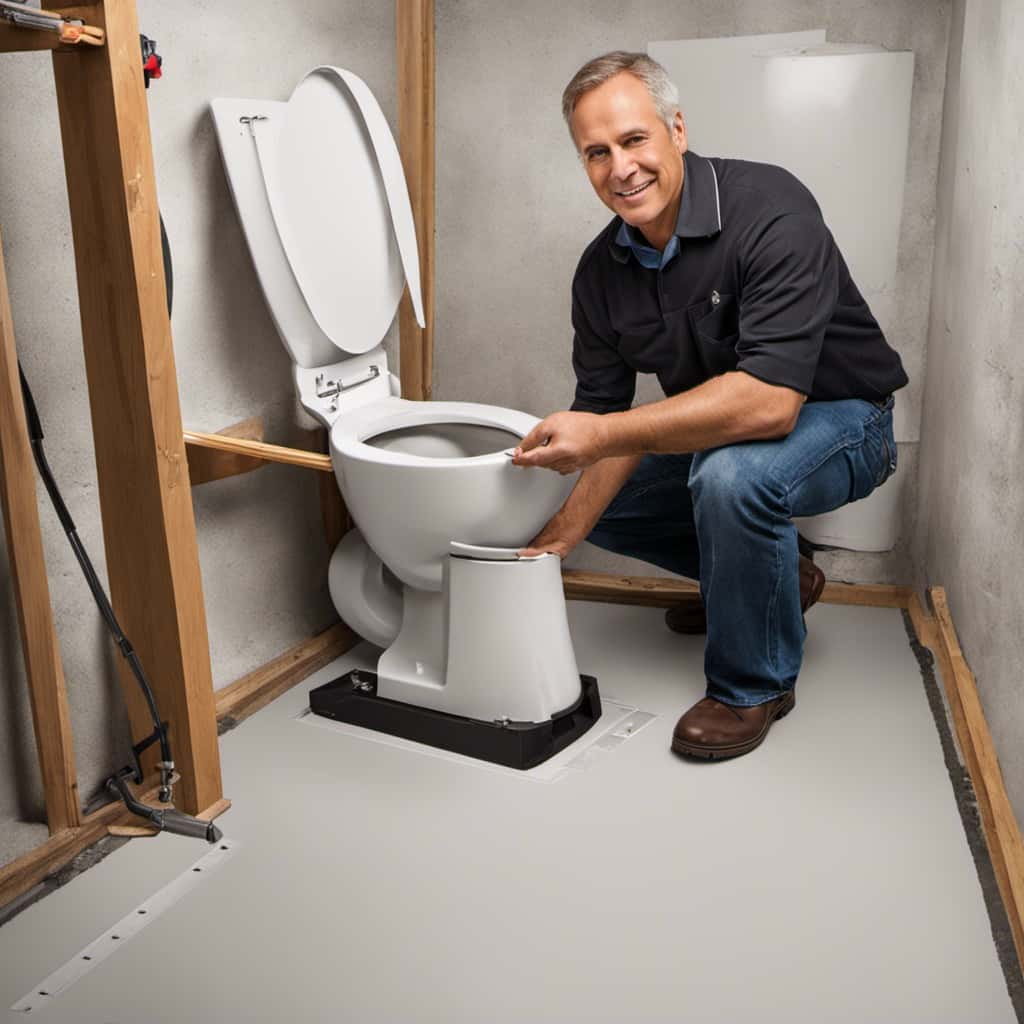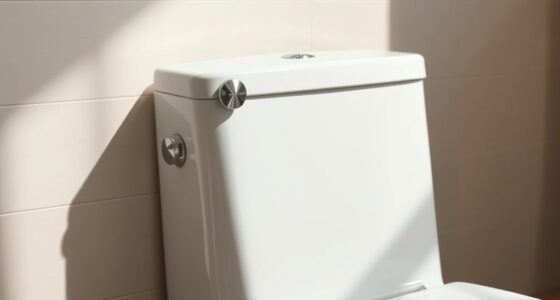Ever curious about the fate of items that get flushed away? Embark on an intriguing exploration with us as we dive deep into the workings of the plumbing system.
From the initial flush to navigating the intricate network of pipes, we’ll uncover the path these objects take.
With our technical expertise, we’ll guide you through the journey, from residential sewers to municipal systems, finally arriving at the wastewater treatment plant.
Get ready to explore the fate of the flushed, as we reveal the secrets of disposal or recycling.
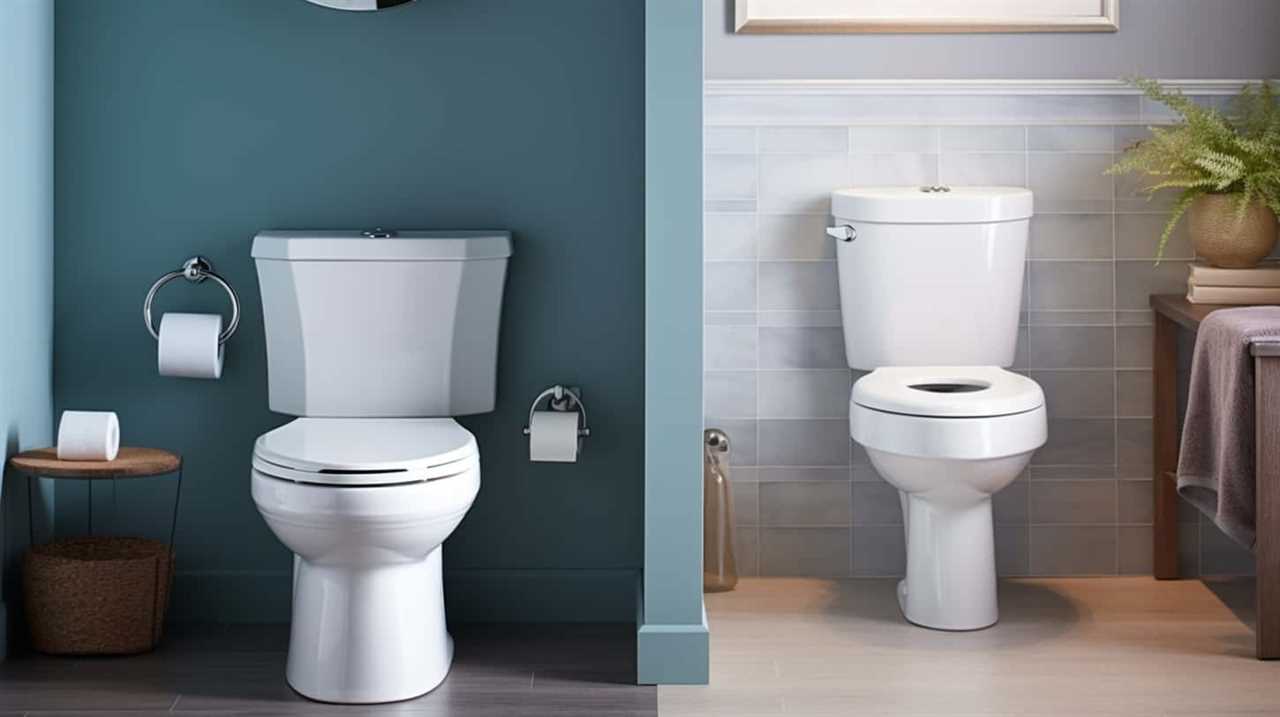
Key Takeaways
- Flushing non-recyclable items can lead to water pollution and harm aquatic life and ecosystems.
- Wastewater treatment facilities may struggle to remove non-recyclable items, leading to blockages in sewer pipes.
- The production and disposal of non-recyclable items contribute to carbon emissions and can damage equipment in wastewater treatment plants.
- Responsible waste disposal and promoting sustainability through recycling and educating the public are important for safeguarding the environment.
The Journey Begins: The Flush
Once flushed, the object travels through the plumbing system. As we explore the plumbing, it’s important to understand the water flow during this journey.
When the toilet is flushed, the water is rapidly released from the tank and enters the bowl through the flush valve. This sudden influx of water creates a powerful force that pushes the object towards the drainpipe.
The water flow is directed towards the trap, a curved section of pipe designed to prevent sewer gases from entering the bathroom. The object then continues its journey through the sewer line, propelled by the force of gravity and the flow of water.
Along the way, it may encounter bends, intersections, and other obstacles in the plumbing system. Understanding the water flow during the flush is crucial to comprehending the path an object takes after it’s flushed down the toilet.
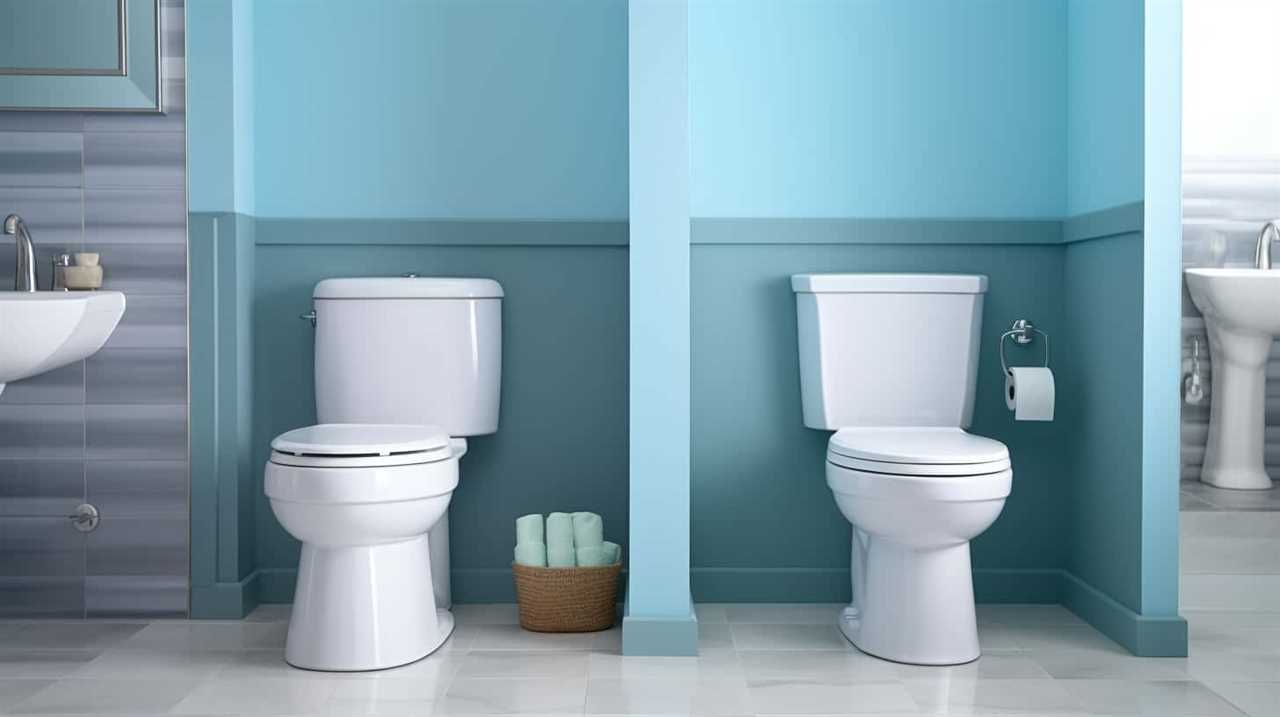
Into the Depths: Navigating the Pipes
As the object is flushed down the toilet, our journey into the depths of navigating the pipes begins. To ensure proper pipe maintenance and prevent clogs, it’s important to understand the intricacies of the plumbing system. Here are some key points to consider:
- Pipe Material: Different types of pipes, such as PVC, cast iron, or copper, require specific maintenance techniques. Regularly inspect and repair any cracks or leaks to avoid blockages.
- Proper Flushing: Only flush human waste and toilet paper down the toilet. Avoid flushing objects like wipes, cotton balls, or feminine hygiene products, as they can accumulate and obstruct the pipes.
- Drain Cleaning: Routinely clean drains using a plunger or drain snake to remove hair, soap scum, and other debris. This helps maintain optimal water flow and prevents clogs.
- Chemical Treatments: Consider using enzyme-based or natural drain cleaners to break down organic matter without causing damage to the pipes.
Meeting the Sewer System: From Residential to Municipal
To understand the journey of an object flushed down the toilet, let’s now delve into how it meets the sewer system, transitioning from the residential to the municipal level.
Once an object is flushed down a residential toilet, it enters the residential plumbing system. This system consists of pipes that connect homes to a larger network of underground sewer lines. These sewer lines are designed to transport waste and wastewater from residential areas to a municipal sewage treatment plant.
As the flushed object travels through the residential plumbing system, it joins other waste materials, such as toilet paper and human waste. This accumulation can have a significant environmental impact if not properly managed. Therefore, it’s crucial to ensure that the residential plumbing system is well-maintained and regularly inspected to prevent any potential issues or blockages.

Downstream Destination: The Wastewater Treatment Plant
After entering the municipal sewer system, the flushed object makes its way to the wastewater treatment plant. At the treatment plant, the wastewater treatment process begins, aiming to remove contaminants and pollutants from the water before it’s released back into the environment. Here are four key steps in the wastewater treatment process:
- Primary Treatment: Large solids and debris are removed through physical processes such as screening and sedimentation.
- Secondary Treatment: Microorganisms are used to break down organic matter through biological processes, further purifying the water.
- Tertiary Treatment: Chemical and physical processes are employed to remove any remaining contaminants, including nutrients and pathogens.
- Disinfection: The water is treated with chlorine or other disinfectants to kill any remaining bacteria or viruses.
The wastewater treatment process plays a crucial role in safeguarding the environment by minimizing the release of harmful substances into water bodies.
However, what happens to the flushed object after the treatment process? Let’s explore its fate: disposal or recycling?
The Fate of the Flushed: Disposal or Recycling?
After undergoing the wastewater treatment process, the fate of the flushed object is determined based on whether it’s suitable for disposal or recycling.

Environmental impact plays a crucial role in assessing the consequences of each option. Disposal involves sending the object to a landfill or incineration facility, which can contribute to pollution and the depletion of natural resources.
On the other hand, recycling offers a more sustainable solution by reusing materials and reducing the need for raw resources. Responsible flushing plays a significant role in determining whether an object can be recycled.
Educating the public about what can and can’t be flushed is essential to prevent non-recyclable items from entering the wastewater system. By understanding the environmental impact and practicing responsible flushing, we can make informed decisions about the fate of flushed objects and work towards a more sustainable future.
Frequently Asked Questions
Can Flushing Objects Down the Toilet Cause Any Damage to the Plumbing System?
Flushing objects down the toilet can cause significant damage to the plumbing system. It can lead to potential costs for repairs and replacements. Additionally, it can have a negative impact on water quality, potentially causing clogs and blockages.

What Are Some Common Objects That People Accidentally Flush Down the Toilet?
When people accidentally flush objects down the toilet, common items include toilet paper and jewelry. Flushing these objects can lead to clogs and damage to the plumbing system, causing costly repairs.
How Long Does It Take for an Object to Travel Through the Plumbing System?
The timeframe for an object to travel through the plumbing system depends on its size and the efficiency of the pipes. However, there are clogging risks along the way that can impede its journey.
What Are the Potential Environmental Impacts of Flushing Objects Down the Toilet?
Flushed objects can potentially contaminate water sources and contribute to water pollution. It is important to be aware of the potential environmental impacts and avoid flushing objects that could harm the ecosystem.
Are There Any Health Risks Associated With Flushing Objects Down the Toilet?
There are potential health risks associated with flushing objects down the toilet. It is important to use proper disposal methods to prevent contamination of water sources and the spread of diseases.
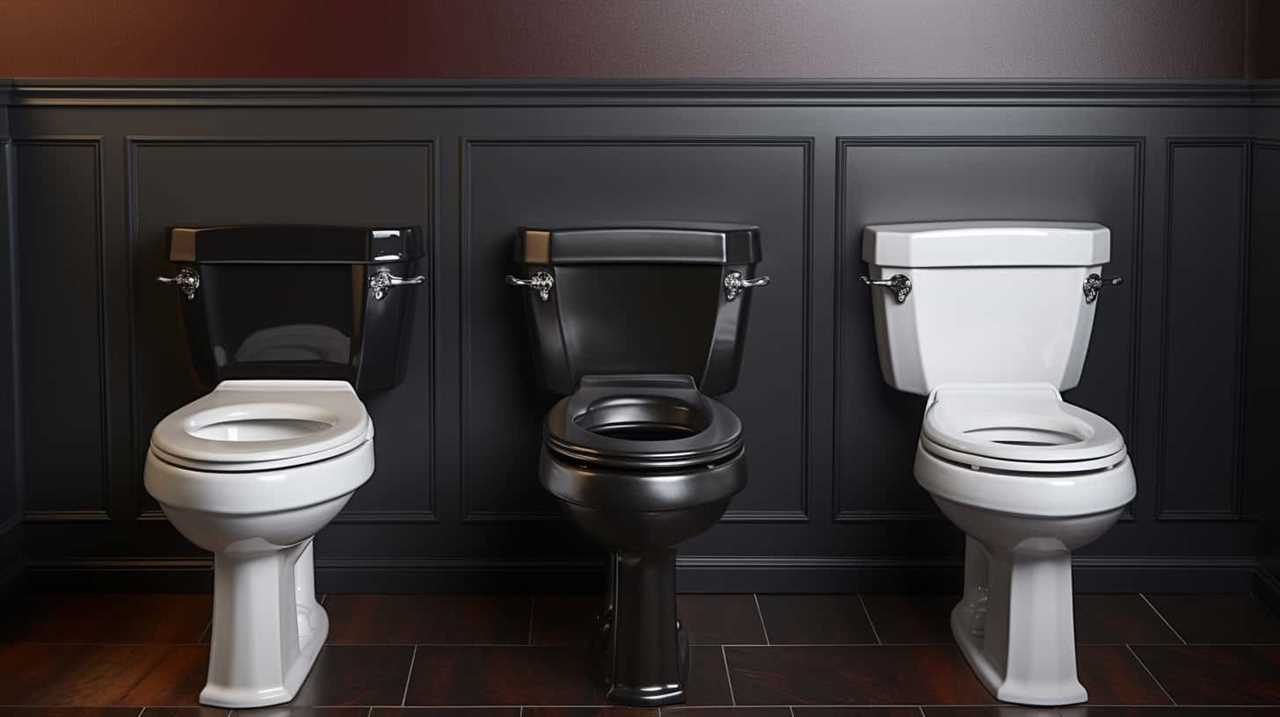
Conclusion
And so, as our flushed object embarks on its tumultuous journey through the intricate labyrinth of pipes, it eventually reaches its destination: the wastewater treatment plant.
Here, it will face its fate, either disposed of or recycled. Whether it will be transformed into something new or forever lost in the vast expanse of waste, we can only wonder.
But one thing is certain, the object’s journey through the depths of the sewer system will forever be a mysterious and fascinating tale.
